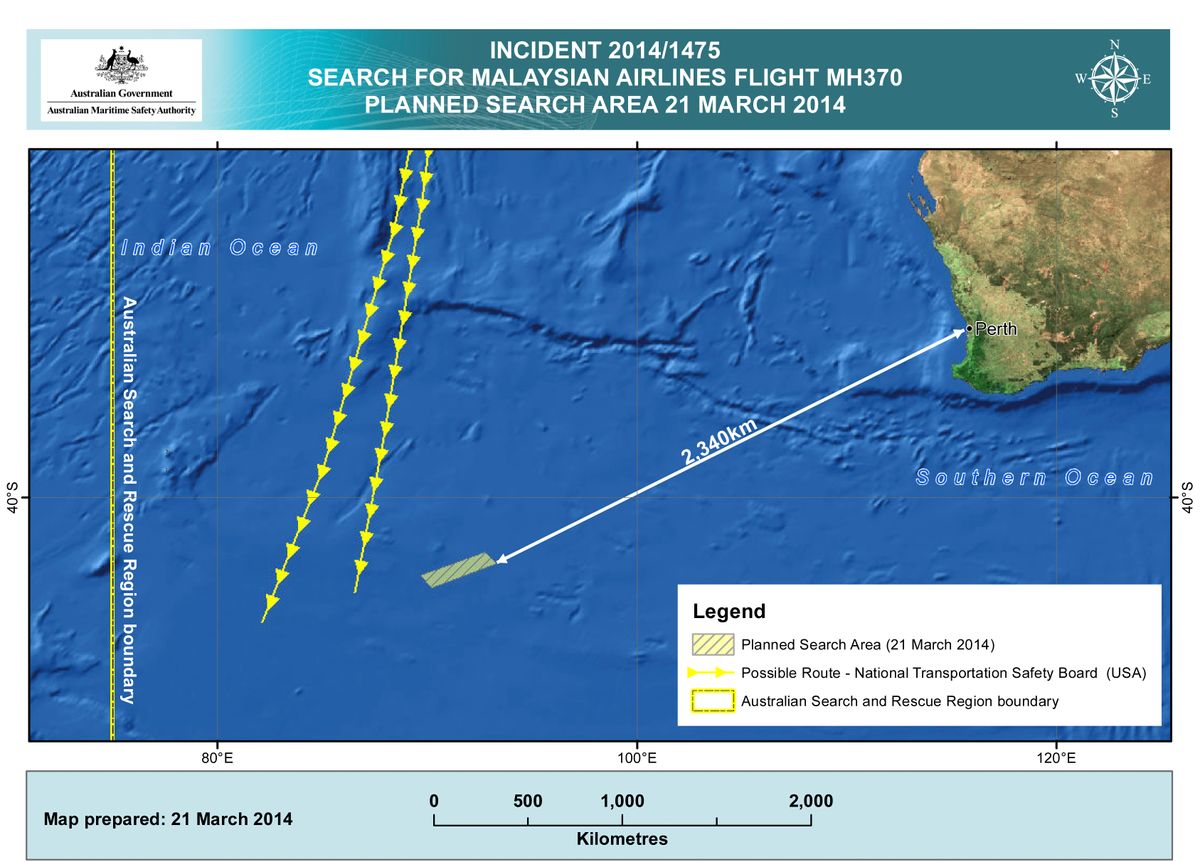Malaysia Airlines flight MH370 went missing 14 days ago. The Boeing 777 took off from Kuala Lumpur after midnight on March 8, and never made it to its 6:30 AM arrival to Beijing. The plane was carrying 227 passengers and 12 crew members who are all currently missing. Much mystery has surrounded the flight: There was apparently a computer programed, abrupt change in direction, and communication transponders went dark 40 minutes into the flight. For two weeks of the public and newscasters alike, have been throwing out wild theories, though the plane has not been found.
There was a possible break in the so far unsuccessful search. Yesterday, Australian Prime Minister Tony Abbott announced that two objects popped up in satellite images of the southern Indian Ocean -- a plausible place for the aircraft to be after it mysteriously veered left. Markings, shape and color of the debris were not released and officials are cautioning that it may not be the missing plane.
Search teams included two Royal Australian Air Force Orion aircraft, a U.S. Navy P8 Poseidon aircraft, a Royal New Zealand Air Force Orion aircraft along with a Norwegian merchant ship that the Australian authorities asked to help in the search. The search team encountered poor weather conditions and reduced visibility and were unable to locate the debris.
Today the search is continuing much the way it did yesterday. Australian Maritime Safety Authority's General Manager of the Emergency Response Division explains below:
Today the search crew includes three RAAF P3 Orion aircrafts, a Bombardier Global Express and a U.S. Navy P8 Poseidon. The merchant ship has also continued searching and will be joined by another by the end of the day.
Due to where the search area is located, searching via plane is tough. The planes, depending on what type, only have two to three hours to search the area before they have to head back to Perth, Australia for more fuel. More ships are headed in the direction of the search area. According to The Guardian, China is sending three warships and possibly a fourth icebreaking vessel that is currently docked in Perth.
Met with press questions about why the satellite information was released, Prime Minister Abbott defended the decision, saying that the families of the missing passengers and crew deserved to know if there was any credible information found that could help with the search. According to The Guardian he said:
“But we owe it to the families and the friends and the loved ones of the almost 240 people on flight MH370 to do everything we can to try to resolve what is as yet an extraordinary riddle. We owe it to them to do everything we can to resolve this, and because of the understandable state of anxiety and apprehension that they’re in we also owe it to them to give them information as soon as it’s to hand and I think I was doing that yesterday in the parliament.”
This morning the New York Times took a moment to examine what many have wondered, "Why don't we use technology to continuously track airplanes?" The entire article is worth a read. According to the Times:
“'The technology is out there, but it’s just a question of political will to recognize this is important,' said Mark Rosenker, a former chairman of the National Transportation Safety Board and a retired Air Force major general. 'What hasn’t improved is that we still have to wait to recover those boxes to begin accident investigations. Precious days are wasted.'”

Shares